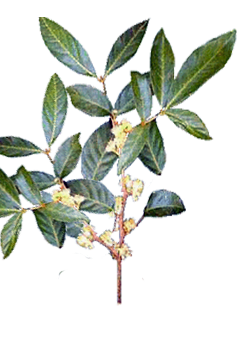
Muira puama is a shrub native to the Brazilian Amazon region. Also called “potency wood”, its roots and bark have an extensive history in Brazilian folk medicine as an aphrodisiac and treatment for sexual dysfunction. Modern interest focuses on whether muira puama can also raise testosterone levels along with libido. But what does the current research evidence report about this traditional jungle botanical? Let’s analyze the science.
Muira Puama Background
Muira puama’s botanical name is Ptychopetalum olacoides. The small shrub’s roots and bark contain special active compounds called sterols along with fatty acids, flavonoids and unique alkaloids that give it medicinal bioactivity.
Historically muira puama was brewed into teas or tinctures for boosting sex drive and performance in both men and women. But science now shows this jungle shrub appears to have testosterone-modulating and neuroprotective properties as well. Can it meaningfully raise T levels?
Research Evidence on Muira Puama and Testosterone
Early studies focused mainly on libido enhancement and erectile function. But a key 2007 study specifically examined muira puama’s T-boosting potential in aging mice. Outcomes showed daily supplementation raised serum testosterone levels in mature and old mice by 37% and 44% respectively over just 2 weeks. These notable elevations provide plausible mechanisms for the significant improvements in libido and sexual performance also observed.
In humans, a small trial on 262 healthy men complaining of poor sex drive revealed 51% of subjects reported improved libido and harder erections after just 14 days supplementing with muira puama. However, the short study didn’t analyze testosterone changes. Follow up clinical studies will need to quantify T fluctuations in men alongside libido assessment.
Possible Ways Muira Puama May Increase Testosterone
Though clinical evidence is still forthcoming, scientists have identified potential pathways by which muira puama may favorably influence testosterone status:
Improved erection pathways
Increased nerve signals and nitric oxide spur more penile erections, promoting healthier sexual vigor associated with higher T.
Better blood flow
Enhanced circulation delivers precursors and gonadotropins to testicular Leydig cells that spark T synthesis.
Decreased SHBG
Lowered binding globulins free up greater ratios of total T to interact with receptors.
Lessened estrogen effects
Weak estrogen agonism prevents testosterone converting to estrogen as readily.
Of course, more research will be important for substantiating the early indication that this herbal Amazonian aphrodisiac can meaningfully elevate testosterone in human males along with improving libido.
Recommendations for Using Muira Puama
While further trials are still needed, reasonable usage recommendations based on traditional preparation methods and early findings include:
Use bark/root powder – Most extracts are unstandardized. Stick with bulk herb powder or capsules for guaranteed potency.
Take before training or sex – Ingest muira puama 60-90 minutes prior to resistance workout or planned sexual activity.
Pair with other pro-T herbs – Combine with tongkat ali, horny goat weed, or saw palmetto for compounded sexual effects.
Cycle every other month – Take muira puama daily for 8 weeks, then take 1 week off to avoid habituation.
Though not a foundational testosterone-boosting tactic, initial science implies muira puama supplementation may provide favorable secondary support as part of a lifestyle-based T elevation protocol when used judiciously.
Conclusion
Muira puama has long-standing traditional use as an aphrodisiac and sexual tonic. Emerging modern research now suggests it may also hold modest testosterone-boosting properties as well. Though human data is lacking, robust rodent findings indication sizeable T level improvements in mature males supplemented with muira puama extract. This indicates probable ancillary value for men looking to naturally reclaim youthful testosterone vigor alongside primary tactics like resistance training, sound sleep, and vitamin D sufficiency. While more trials are warranted, prudent muira puama supplementation already appeals as a solid adjunctive strategy today.
